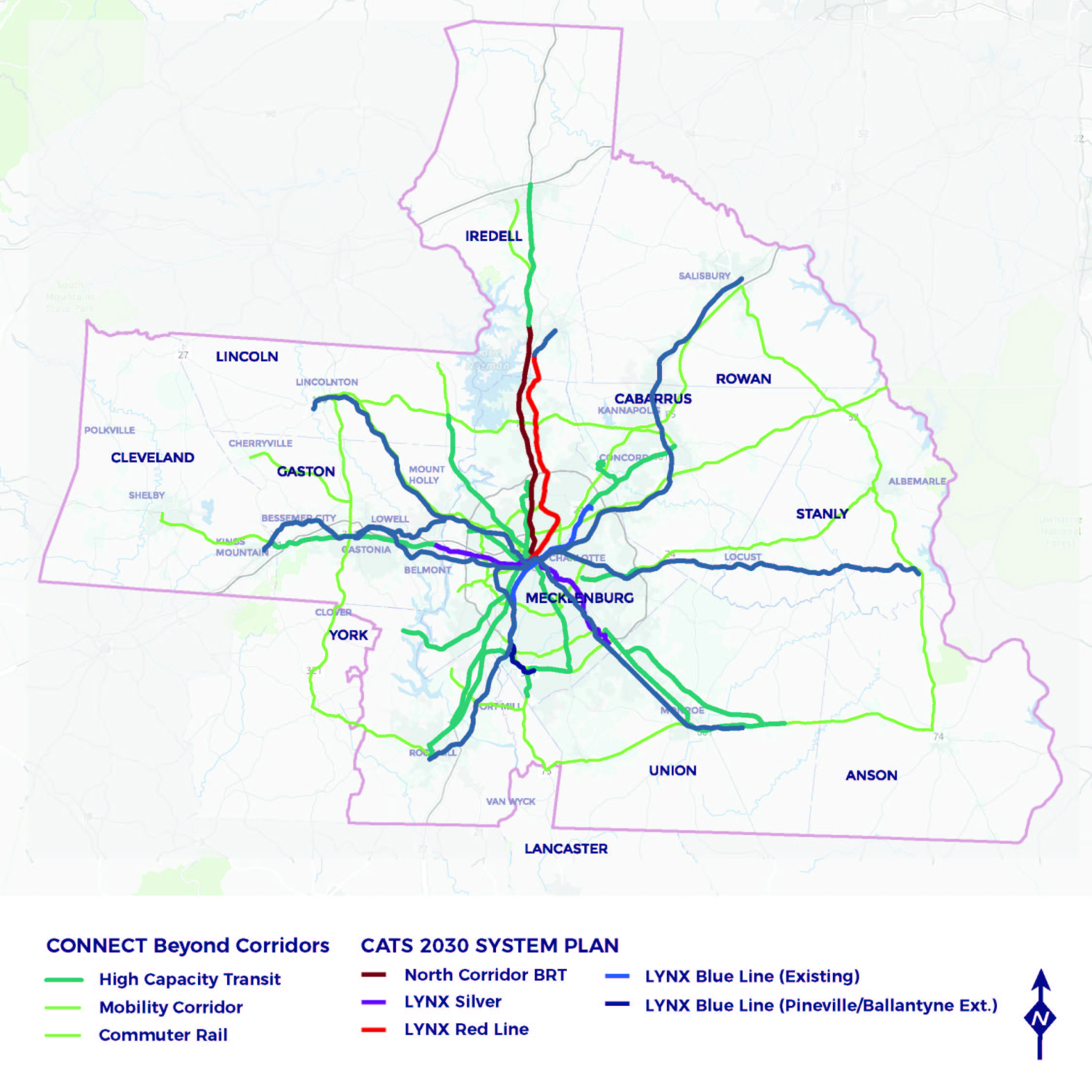Invest in Strategic Mobility Corridors
A major part of CONNECT Beyond’s regional mobility plan was identifying and evaluating strategic mobility corridors throughout the region. To identify and evaluate strategic mobility corridors, our Team conducted a High Capacity Transit Corridor Identification and Evaluation Process and a Commuter Rail Assessment.
During the High Capacity Transit Corridor Identification and Evaluation Process, CONNECT Beyond identified and evaluated Candidate Corridors along which high capacity transit lines could be implemented. From this Process, 13 High Capacity Transit Corridors and 24 Emerging Mobility Corridors are recommended.
Through the Commuter Rail Assessment, CONNECT Beyond identified and evaluated potential commuter rail corridors to serve our region. Following this Assessment process, four Initial Commuter Rail Corridors are recommended for near-term implementation and three Long-Term Commuter Rail Corridors are recommended for implementation in the longer term.
High Capacity Transit Corridors
What is High Capacity Transit?
High capacity transit is a form of public transit that offers more passenger capacity and operates at higher speeds with fewer stops than traditional local bus services. Some examples of high capacity transit include light rail, bus rapid transit, express buses, commuter rail, and streetcars. A primary purpose of CONNECT Beyond is to guide our region in developing an integrated regional mobility system and high capacity transit lines will serve as the backbone of this regional mobility system.
Commuter Rail Corridors
In parallel with the High Capacity Transit Corridor Identification and Evaluation Process, the CONNECT Beyond Team also identified and evaluated potential commuter rail corridors to serve the greater Charlotte metropolitan region. As demands on the Charlotte region’s freeway system continue to grow, resulting in increased travel times, commuter-based transit presents a unique solution to corridor congestion.
What is Commuter Rail?
Commuter rail refers to passenger trains that operate along railroad tracks and offer scheduled regional services, often between a central metropolitan hub and adjacent suburbs. On an average weekday in the United States, approximately 1.7 million trips are made on the nation’s commuter rail systems.
Commuter Rail Assessment Process
Since most commuter rail services in the United States operate along existing freight railroad trackways, the Commuter Rail Assessment gathered and reviewed applicable data on the ownership, operation, condition, and classification of the existing freight rail trackways in the region and those anticipated to be used for commuter rail purposes.
To learn more, refer to Section 4 in the CONNECT Beyond Regional Mobility Plan.
Read the Final PlanHow We’ll Get There: Commuter Rail Recommendations
From the Commuter Rail Assessment, the CONNECT Beyond Team found that each of the seven Candidate Commuter Rail Corridors are technically feasible and would provide access to Uptown Charlotte from points across the region. As part of the Commuter Rail Assessment process, the CONNECT Beyond Team advanced four corridors that have more immediate ridership potential as Initial Commuter Rail Corridors and three corridors that show less immediate ridership potential but should continue to be considered as Long-Term Commuter Rail Corridors.

